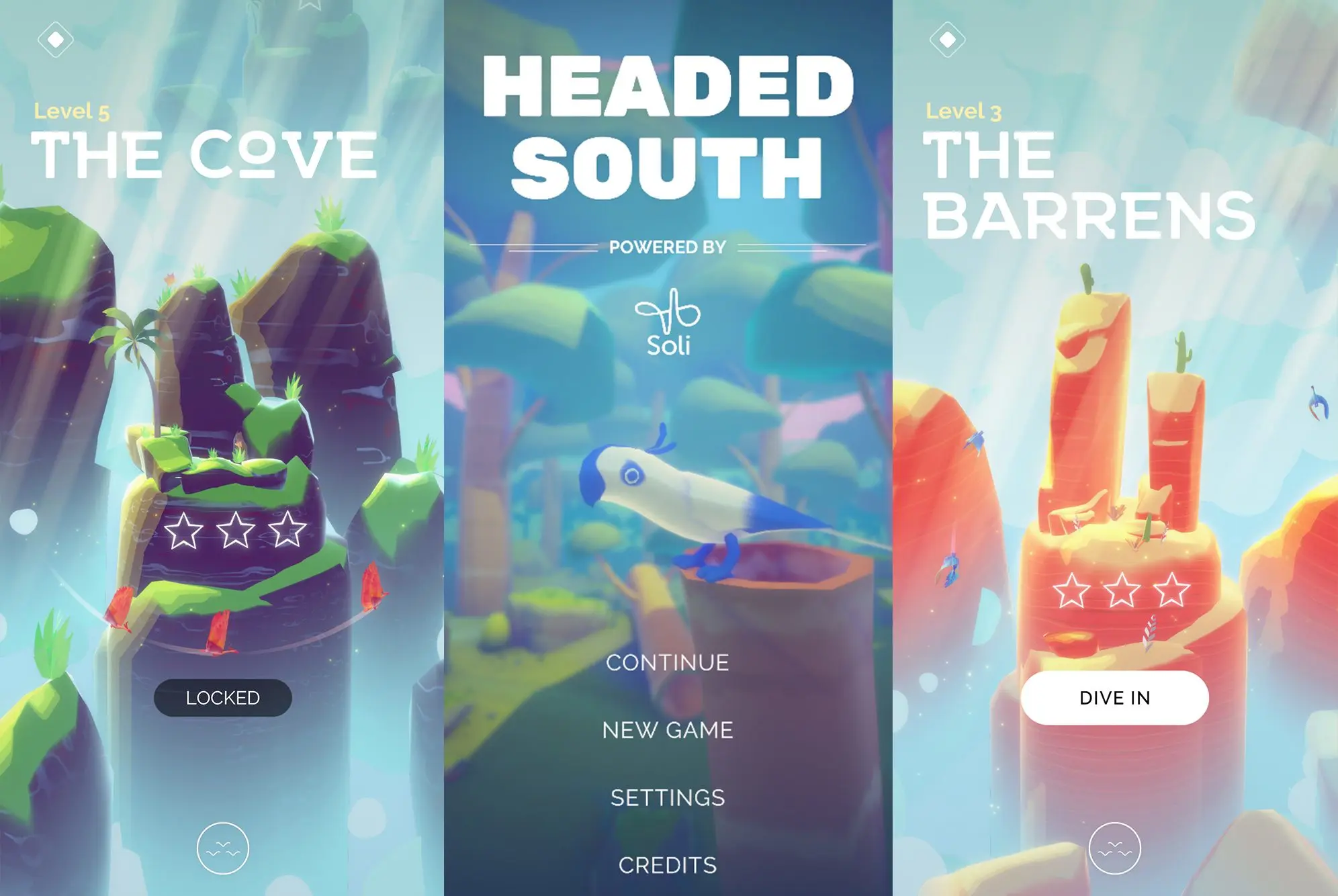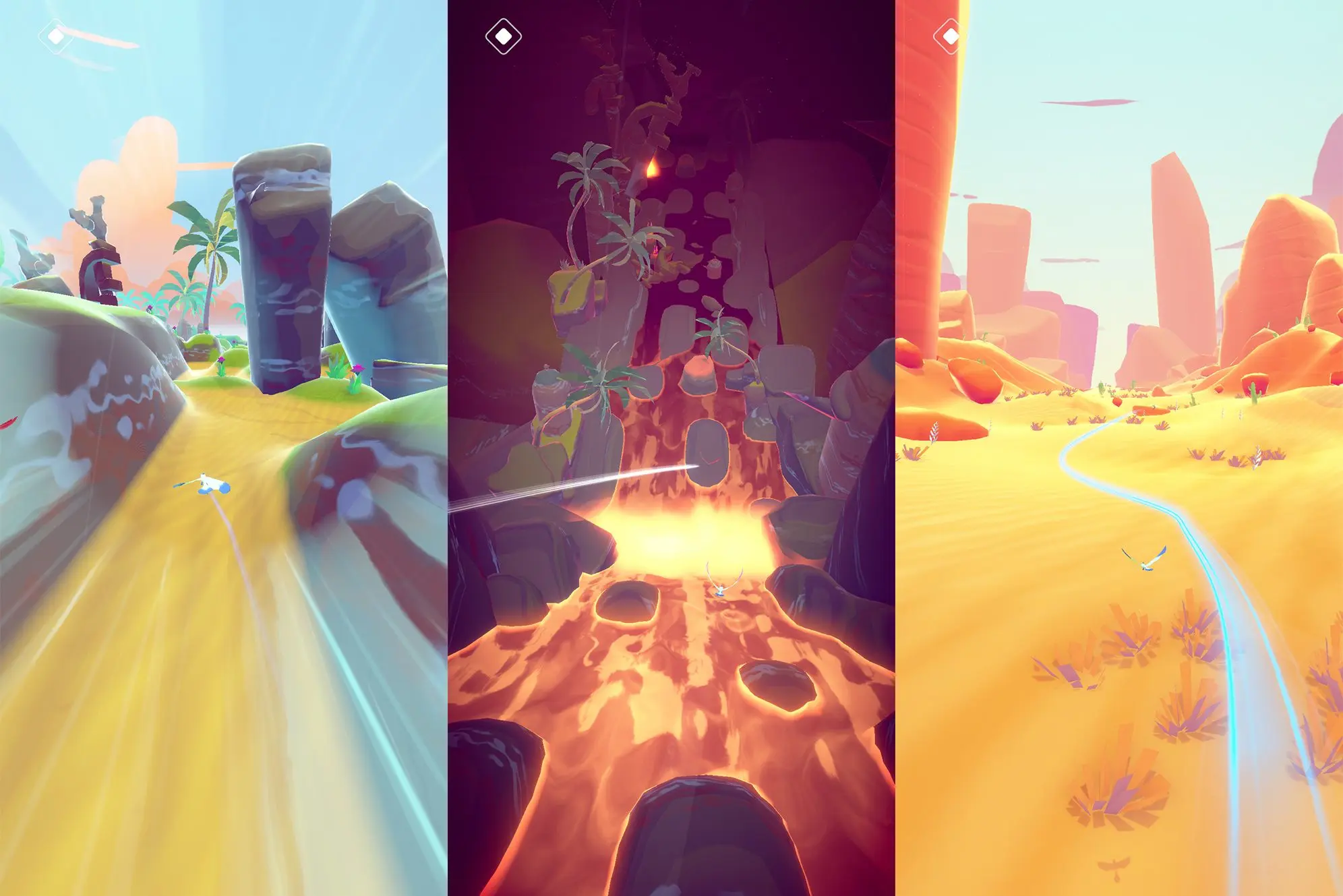Google’s Pixel 4 phone gives up on a lot of what made the Pixel line great. At least in my personal opinion! But it does feature an intriguing technology that the company has barely explored. It’s called Soli. Led by UX legend Ivan Poupyrev in a project out of Google’s Advanced Technology and Projects group, it’s a radar that lives just above the phone’s screen to see shapes.
On the Pixel 4, Soli allows you to do things like air swipe to skip forward and backward on Spotify, or wave to Pokemon in the phone’s live wallpapers. And now, in partnership with the creative studio UsTwo, Google is launching a free game called Headed South to showcase the technology in a fully realized app.

“Overall, the project goal in itself was a mix between an onboarding experience and play experience,” says Anders Oscarsson, the design lead at UsTwo who headed the project. “It wasn’t specifically about creating a game. . . . It’s still early days [for the technology].”
Headed South turns you into a bird flying from a storm. As you go, you encounter other birds. Using your right finger on the screen, you draft in their wake until you catch up and they join your flock. Then, to perform special tricks—like a turbo boost to catch up with the bird in front of you—you can air swipe with your left hand, activating the superpower without touching the screen.
The game is a masterclass in world building. It features fantastical, immersively rendered levels that celebrate nature. You will swoop down subterranean waterfalls, and rocket up mountains. You’ll glide under falling rocks and dart between trees. The sonic design is particularly satisfying, too. The game loads with a rich audio landscape of being in the rainforest. Animals call to one another. Frogs or monkeys croak and grunt in the background. Even through the Pixel 4’s tiny speaker, I feel transported to another place.

During particularly intense moments, the orchestral score picks up, which naturally raises your pulse during an intense bird chase. These are the sorts of moments that, in a less lovingly designed game full of coins and loot boxes, simply don’t exist.
It’s a bite-size yet epic experience. You can beat the entire game in 20 minutes or less—at which point, you’ll likely have had enough. The world is grander than the gameplay, which after a short while, you’ll realize consists of keeping your thumb on the zigzagging trail of the bird in front of you.
[Image: UsTwo]
The game is meant to warm you up to the world of Soli gestures, but to be honest, they feel less additive than, I hate to say, sponsored. During seemingly scripted moments, a tunnel of air appears in front of you, and waving your off-hand left in the air enables you to enter a turbo boost. During a particularly intense chase, I found I was swiping too quickly for the game to register. Once, I smacked the phone right out of my hand.
As Oscarsson explains to me, UsTwo built 25 prototypes, experimenting with Soli gestures that felt fun, before ever conceiving the game we see here. The winning project allowed the user to wave their hands to blow wind at a kite. It was a 1:1 gesture, and it was incredibly satisfying . . . as a demo. When the team scaled it to a game, the action became a chore.
“How often you’re gesturing, that’s something we played around with a lot,” says Oscarsson. “The first thing we tried was, you were controlling the bird and you’d push the wind all the time. The more you gestured, the faster you’d go. It created a repetitive interaction that got old soon. With a touchscreen, you wouldn’t be tapping on the bird all the time to fly fast!”

So the team scaled the gesture back for those special, superhero moments. The game introduces only a few new gestures over the short levels, which basically prompt you to swirl your hand left or right, as opposed to simply swiping. This makes your bird enter a barrel roll. It’s satisfying when the gesture works, sure, and it adds to the excitement of the chase. But it’s not like the first time you bowled on the Nintendo Wii and felt a revolution was afoot.
From all technical information we’ve seen, Soli has the potential to do truly incredible things. Its radar fidelity is sharp enough that it can literally identify the objects you place in front of it. That’s nuts! I can’t help but imagine a future where Soli allows your phone to understand its context—not just where it is via GPS coordinates, but what the direct environment is really like around it at any moment.
But for now, Soli is still just a very polished tech demo in search of a purpose. UsTwo’s mini-game is a well-articulated piece of work. But the best way to market a quirky new technology isn’t always entertainment, but utility. If Google really wants to sell the world on Soli, the company needs to make it essential—not another novelty.
Recognize your brand’s excellence by applying to this year’s Brands That Matter Awards before the early-rate deadline, May 3.